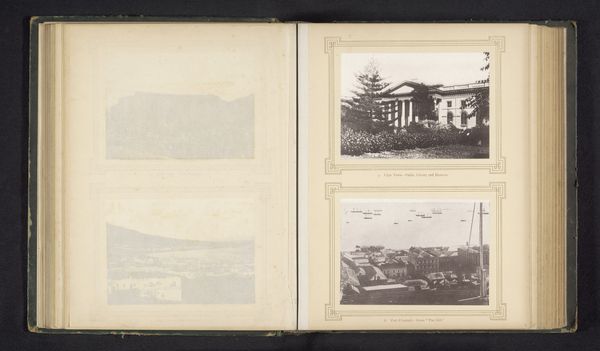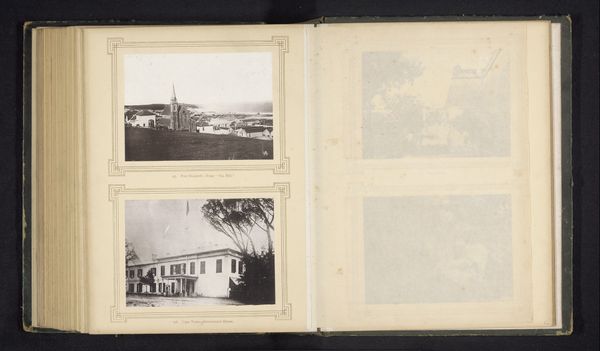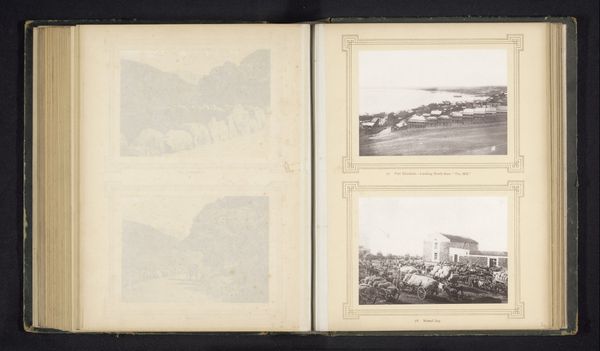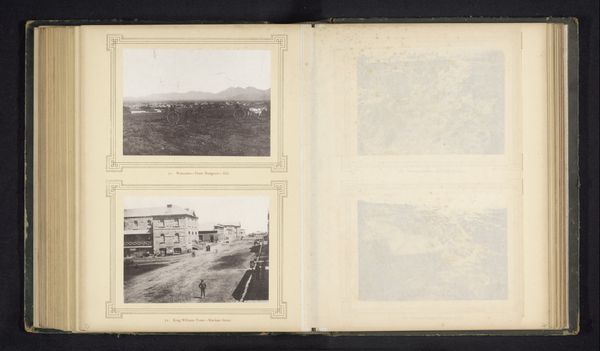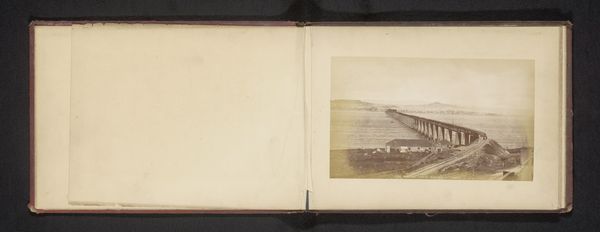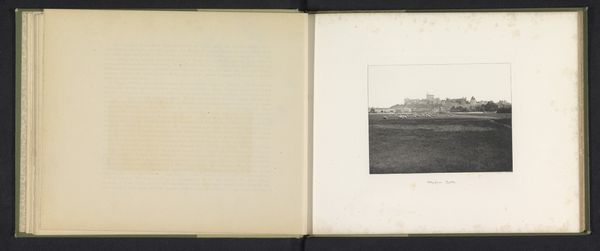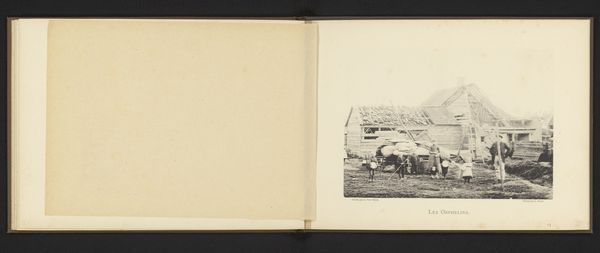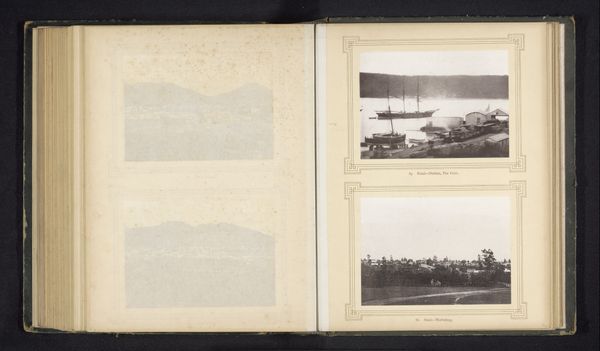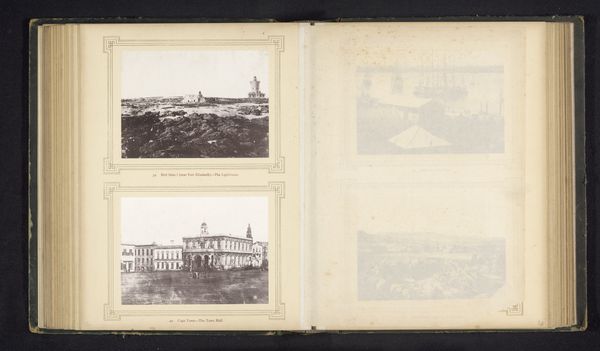![["Rorke's Drift", "Rorke's Drift - Scene of Battle (Zulu War)"] by Sam Alexander](/_next/image?url=https%3A%2F%2Fd2w8kbdekdi1gv.cloudfront.net%2FeyJidWNrZXQiOiAiYXJ0ZXJhLWltYWdlcy1idWNrZXQiLCAia2V5IjogImFydHdvcmtzL2VkZTU0OGY0LWYxZGYtNGZkYi05ZmQ2LTM3ODU1ODI5MjI0My9lZGU1NDhmNC1mMWRmLTRmZGItOWZkNi0zNzg1NTgyOTIyNDNfZnVsbC5qcGciLCAiZWRpdHMiOiB7InJlc2l6ZSI6IHsid2lkdGgiOiAxOTIwLCAiaGVpZ2h0IjogMTkyMCwgImZpdCI6ICJpbnNpZGUifX19&w=3840&q=75)
photography, albumen-print
#
african-art
#
landscape
#
photography
#
albumen-print
#
realism
#
building
Dimensions: height 290 mm, width 219 mm
Copyright: Rijks Museum: Open Domain
Editor: Here we have an albumen print from before 1880, titled "Rorke's Drift." It seems to depict the site of a battle during the Zulu War. The photos themselves are very striking, especially because the image is mounted within an album page, which is also included in the composition. What stands out to you when you consider this photograph? Curator: Well, immediately I think about the labor involved in producing this image. Creating an albumen print was a complex, messy, time-consuming process. This highlights the intention behind creating the image itself: not just documenting a location, but presenting it within a specific social and political context for consumption back in Europe. Who were the intended consumers, and what impact did this photographic production have on the public's understanding of the war? Editor: That’s interesting. I was focused on the composition within the photograph and didn’t think much about the medium itself. Do you think the choice of albumen print, instead of some other medium, held significance? Curator: Absolutely. Albumen prints, known for their sharp detail and tonal range, would have been seen as “truthful” representations, even objective. The smooth surface also allowed for easy reproduction in publications. This facilitated widespread dissemination, solidifying a particular narrative about the war effort in the colonial mindset. Furthermore, who benefitted financially from this production, and whose story were they profiting from? Editor: So, it's less about the individual image itself, and more about how its materiality and production impacted its social function. Considering who was involved and how they made their profits gives me much to consider. Curator: Exactly. Think about the relationship between the technology, the artist, the consumer, and the broader political forces at play. How did the means of production influence the reception and perpetuation of colonial ideologies? Editor: I never would have thought to look at it from this angle, but now the image resonates with the historical circumstances of its creation. Thanks so much!
Comments
No comments
Be the first to comment and join the conversation on the ultimate creative platform.
